Shrewsbury's flax mill's Jubilee Tower revealed
- Published
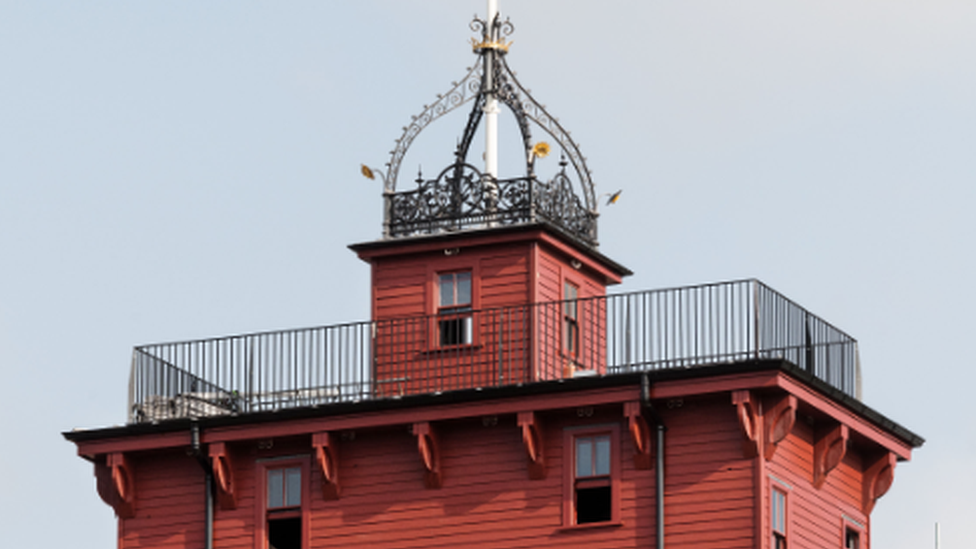
Timber cladding boards have been replaced, along with a new roof featuring traditional lead-work
Restoration work on part of a historic mill in Shropshire has been completed.
Scaffolding on the Jubilee Tower at Shrewsbury flax mill has been taken down and its iron coronet now bears an 8m (26ft) flag-pole.
The mill is thought to be the world's first iron-framed building and the latest work is part of a multimillion-pound project to restore the building.
Supporters of the work said the unveiling of tower, which was erected over 100 years ago, was "fantastic".
Alan Mosley, Chair of the Friends of the Flaxmill Maltings said: "Now that the scaffolding is down, the local community can once again see and enjoy this important part of the Shrewsbury skyline."
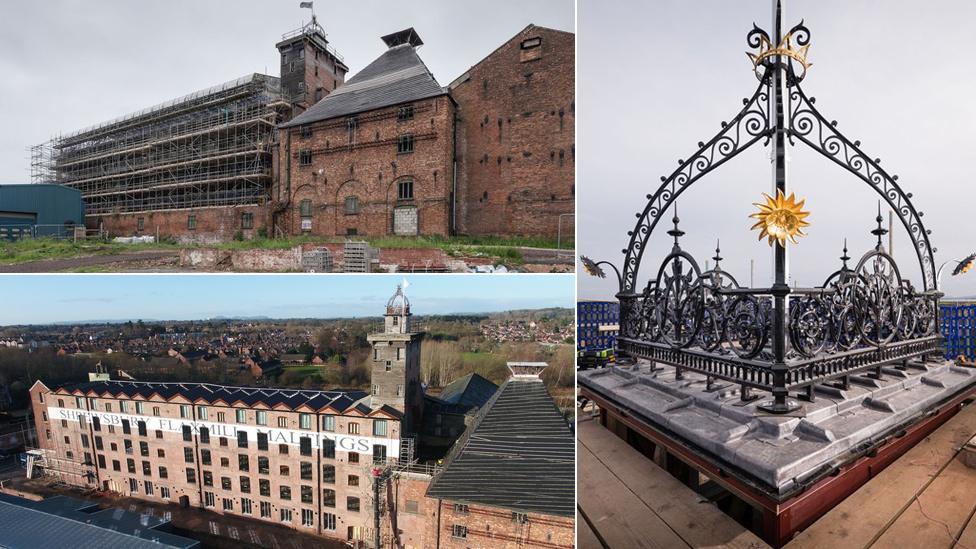
The mill, built in 1797, was at one time named the country's most at-risk building by Historic England
Seeing more of the painstaking work being completed "brings us a step closer to opening", he added.
The building, with its iron-frame, paved the way for the world's skyscrapers.
At its height, more than 800 men, women and children worked at the mill turning flax into cloth.
Built in 1797, it was converted to a maltings in 1897, processing barley for the brewing industry, and new structures were added, including the Jubilee Tower and a kiln.

The mill, pictured here in the late 19th Century, was built in 1797
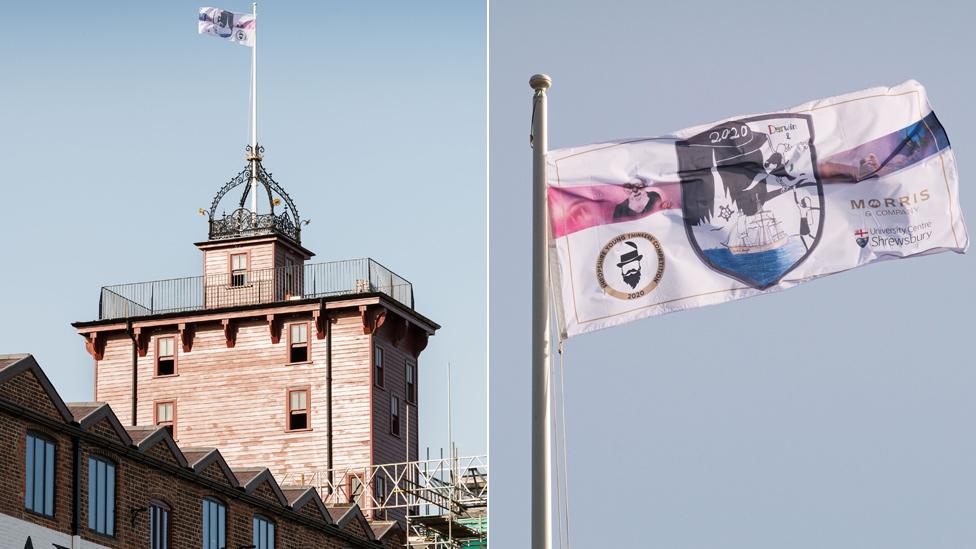
The first flag to be flown above the newly restored coronet is a design by competition winner, 12-year-old Vivian Wang
The buildings have lain empty since the maltings closed in 1987 and at one time it was named the country's most at-risk building by Historic England.
As part of repair work on the tower, timber cladding boards have been replaced, along with a new roof, featuring traditional lead-work, and the building has been painted.
A crowdfunding campaign last year helped raise £11,000 to save the coronet, with remaining restoration costs coming from donations, a spokesperson for the mill said.
It is hoped the £20.7m lottery and Historic England project will be completed by next summer.
The regenerated site will become a new "learning and enterprise quarter" in Shrewsbury, with offices for creative industries.

Follow BBC West Midlands on Facebook, external, Twitter, external and Instagram, external. Send your story ideas to: newsonline.westmidlands@bbc.co.uk , external
- Published13 February 2020
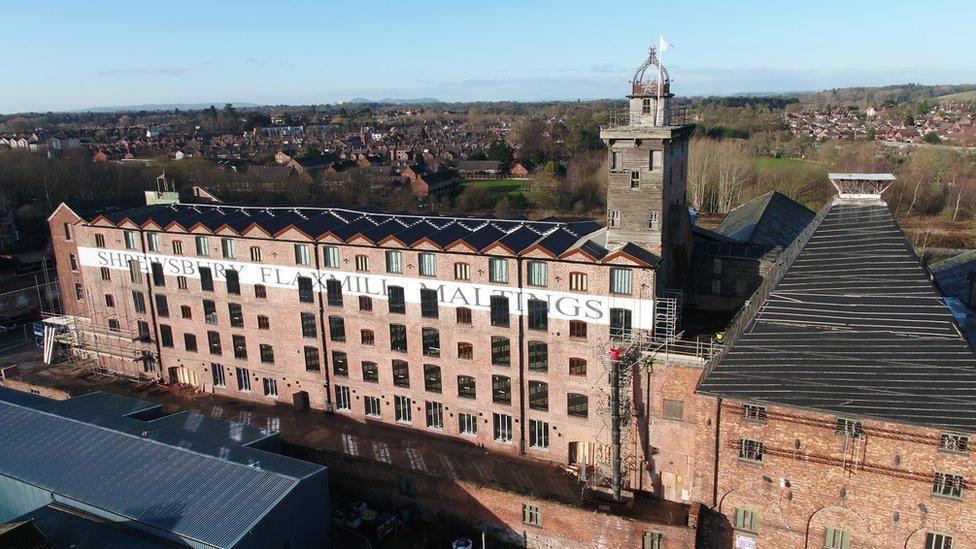
- Published5 June 2019
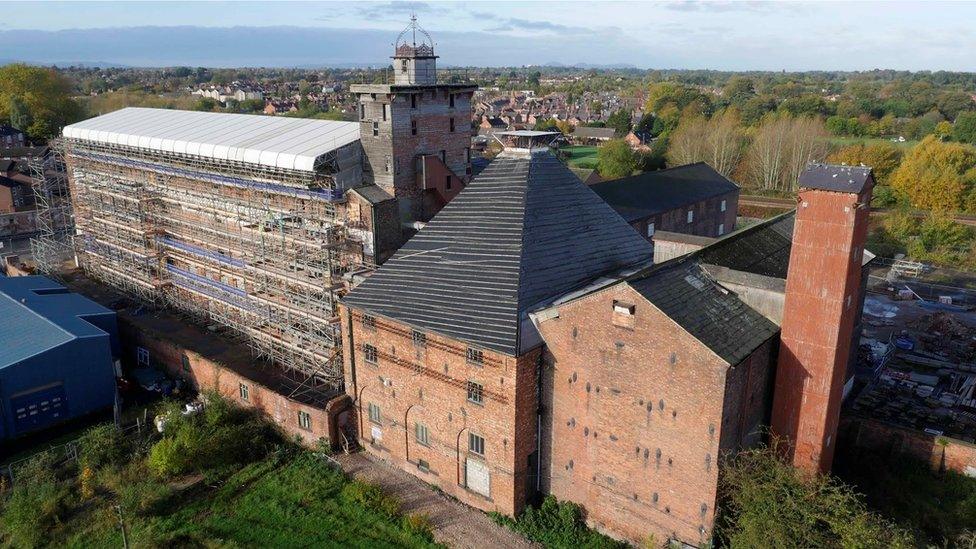
- Published20 May 2019
